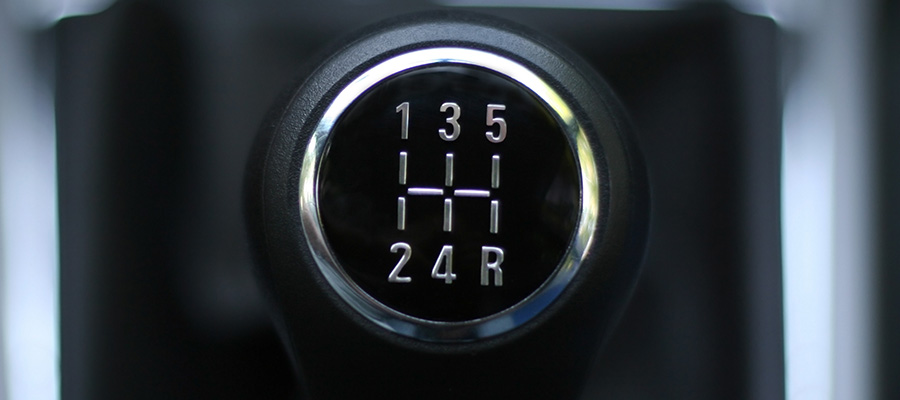A key decision when buying a car is choosing what gearbox you want – manuals have many pros but does the ease of use offered by automatics outweigh them?
Petrol and diesel-powered engines are designed to only work within a certain range of speeds. So a gearbox is used to make sure the engine stays in its happy operating zone.
Most cars come with a choice of either a manual or automatic gearbox. Manual gearboxes add a clutch pedal alongside the brakes and accelerator, and require the driver to carefully let the clutch in and out to pull away smoothly and change gear. Automatics simplify this process by determining gear selection based on speed and engine load, and replace the manual clutch with an automatic coupling, usually managed by a combination of electronic and hydraulic control.
There are pros and cons to both options, so your decision is likely to be influenced as much by personal preference, as it is by raw facts and figures. Below, we take a look at the benefits and drawbacks of manual and automatic gearboxes, hopefully helping you decide which is right for you.
All electric cars and most hybrid cars have an automatic gearbox as standard. Fully electric cars don’t have gears – all their power is available instantly, which is why they’re so quick off the line – while hybrids are automatic because the car is set up to juggle its fuel and electric power sources in the best possible way.
Manual vs automatic – which is best?
Benefits of manual gearboxes

The pros of manual gearboxes include:
- Price – with almost no exceptions (looking at you, Porsche!), cars equipped with manual gearboxes cost less than the same car when equipped with an automatic. This means, if you’ve got your eye on a particular model, you might be able to get it for less if you’re happy to change your own gears.
In general, on models where both automatic and manual gearbox options are available, carmakers will reserve the automatic option for the more powerful engines, which are typically only available in costlier trim levels. Again, if you’re targeting a particular model, that means you’ll probably have to spend more money to even be offered the option of an automatic gearbox. - Efficiency – this point has become less of a factor with the development of modern, ultra-efficient automatics but, as a general rule, cars equipped with manual gearboxes will use less fuel than the same car equipped with an automatic gearbox. That means you’re likely to spend slightly less at the fuel pumps in a manual car compared with an automatic one.
The reasons behind this difference are complex. It’s slightly easier, when driving in the real world, to deploy the engine’s power a little more accurately using a manual gearbox, compared with an automatic. Plus, automatic gearboxes – especially older designs – also suffer from greater ‘pumping losses’ compared with manuals, which increases drag on the engine and, thus, fuel consumption. - Availability – another benefit of being able to drive a manual is the greater availability of cars for you to choose from. If you have a manual licence, you’re able to drive cars equipped with either a manual or an automatic gearbox. However, if you only have an automatic licence, you can only select from cars that change gears themselves.
Not only does being able to drive a manual give you access to a wider selection of cars to buy, it also gives you greater flexibility when renting a vehicle. This means you can access more affordable vehicle options when on holiday, or when renting a van to move large items. Drivers with an auto-only licence have fewer options in these scenarios, and most of them will cost more than manual alternatives.
If you’re learning to drive, check out our guides to passing your theory test and passing your practical driving test.
- Driving pleasure – this is the most subjective benefit but plenty of drivers swear by manual gearboxes simply because they enjoy using them more than automatics. This is especially true in sporty cars, where the driving experience itself is usually one of the key selling points.
Manual gearboxes give you a sense of direct control over an engine’s power, which you then judiciously deploy via gears that you select yourself. While that might sound like a faff to those that just drive to get from A to B, many derive great pleasure from selecting the right gear at the right time, and letting the clutch in and out smoothly.
Drawbacks of manual gearboxes
For all the benefits of changing gears yourself, there are also downsides, including:
- Driving effort – evidently, adding a third pedal, with its own specialised learning curve, and requiring drivers to select and change their own gears demands more effort than if the car did everything itself. This is usually the reason that sees some drivers swap from manuals to automatics – the sudden reduction in effort needed to drive the car.
Sure, there are plenty of drivers out there that get great pleasure from neatly using a manual gearbox, but there are just as many who’d just like to get home without putting themselves out. Here, automatic gearboxes shine by taking away the pressure of finding and modulating a clutch’s bite point, or the need to choose the right gear at the right time. - Clutch wear – all mechanical parts in a vehicle are subject to wear over time, and neither manual nor automatic gearboxes are any more or less susceptible to damage as a result of their fundamental design. However, when buying a manual-equipped car, it’s important to remember that the clutch will have been controlled by a human, who may or may not have used it effectively.
In the absolute worst case scenario, the owner before you might have had very poor clutch control which could cause accelerated wear to the clutch surface. This means, whenever buying a used manual car, be sure to check the operation of the clutch – especially that there isn’t lots of dead space in the pedal travel before the clutch starts to bite, which could indicate that it’s quite badly worn. - Design compromises – manual gearboxes, by their nature, require that a manual gearstick is fitted to the car’s cabin, allowing the driver to change gears. Invariably, this is positioned in the centre console, between the driver and front passenger seats.
Of course, there’s nothing wrong with this positioning, but it does take up space that could be devoted to storage or a control unit for the infotainment system, for example. Automatics simply need to be able to swap between P, R, N and D, which can be achieved by simple buttons on the dashboard, or a small lever on the steering column. Moving gear selectors out of the way permits more storage space in the centre console.
Benefits of automatic gearboxes

Plenty of drivers eventually fall for the attractions of automatic gearboxes, which include:
- Ease of use – this is the headline plus-point for automatic gearboxes. After selecting drive or reverse, all you need to do is use one foot to modulate the brake pedal to get moving, without any threat of stalling the car if you get it wrong. You want to go faster? Press the accelerator. You want to go slower? Press the brake. It couldn’t be simpler.
For many drivers, especially those with regular commutes, the reduction in mental energy required to drive an auto compared with a manual more than makes up for any of the downsides covered here. This is especially true if you often have to drive through stop-start traffic in urban areas, where a manual’s clutch pedal can become a real chore. - Efficiency – the eagle-eyed among you will have noticed we also listed efficiency as a benefit of manual gearboxes, but the most recent generations of automatics have made enormous strides in this area. Many modern cars offered with both manual and auto gearbox options see almost no difference between mpg figures for the two variants where, historically, autos would be expected to use much more fuel.
Key developments that have led to the efficiency gap narrowing are the introduction of auto gearboxes with seven, eight, or even more ratios. This gives the engine a wider efficient operating window, reducing fuel consumption. At the same time, new coupling methods have been created, such as computer-controlled clutches, that see less of the engine’s energy wasted as pumping losses. - Driving pleasure – again, we listed this as a benefit for manuals, so what’s it doing here? The development of ever-more efficient automatic gearboxes means, as a side effect, that these autos can now change gear incredibly quickly – as shown by the likes of VW’s DSG or BMW’s DCT gearboxes.
This has led to many automatic cars now featuring gear-shift paddles behind the steering wheel, giving these cars something of a ‘video-game feel’ if you fancy changing gears yourself. As soon as you’ve had your fun, you can pop the car back in ‘D’ and carry on driving as if it was a traditional automatic.
Drawbacks of automatic gearboxes
There are a handful of reasons you might want to avoid automatic gearboxes, such as:
- Cost – automatic gearbox options almost universally cost more than their manual counterparts, due to the increased mechanical complexity involved. This means the overall car you buy will cost more money, meaning you get slightly less for your budget than if you’d chosen a manual car.
There may be some more subtle extra costs, too. While the difference is unlikely to be very large, you will probably use more fuel than an equivalent manual car. Plus, you might find that your insurance and maintenance costs are slightly higher for an automatic compared with the same manual car. - Availability – if you have your heart set on a particular make and model, you might have to wait a little longer for one to become available with an automatic gearbox. Certainly on models that offer a choice of either manual or automatic, you’ll normally find a larger selection of manual cars.
On the other hand, this is less common for buyers looking at more expensive vehicles from premium manufacturers. The likes of Mercedes, Audi and BMW will generally build more automatic vehicles than manual ones, making it easier to find an auto option if you’re buying at that end of the market.
Which should you choose?
Your decision over whether you should buy an automatic or a manual gearbox is most likely to be informed by your own preferences.
If you’re buying a car as a tool to get from A to B with a minimum of fuss, you may well be better served by an automatic gearbox. There’s no pressure to find the biting point and no need to consider what gear you should be in – all of that is handled by the car – making driving less of a mentally taxing operation.
If, however, you fancy saving a bit of money, or you’re looking closer to the more affordable end of the market, or you simply enjoy the tactile sensation of smoothly shifting through the gears, a manual gearbox might be a better choice. You’re likely to spend less in the long run and will probably have more vehicle options available to you when you come to buy your next car.
Check out a great range of manual and automatic cars at Motorpoint
Motorpoint has thousands of great cars for sale, with plenty of choice for manual and automatic buyers. Take a look at our selection of used manual cars and used automatic cars.


































